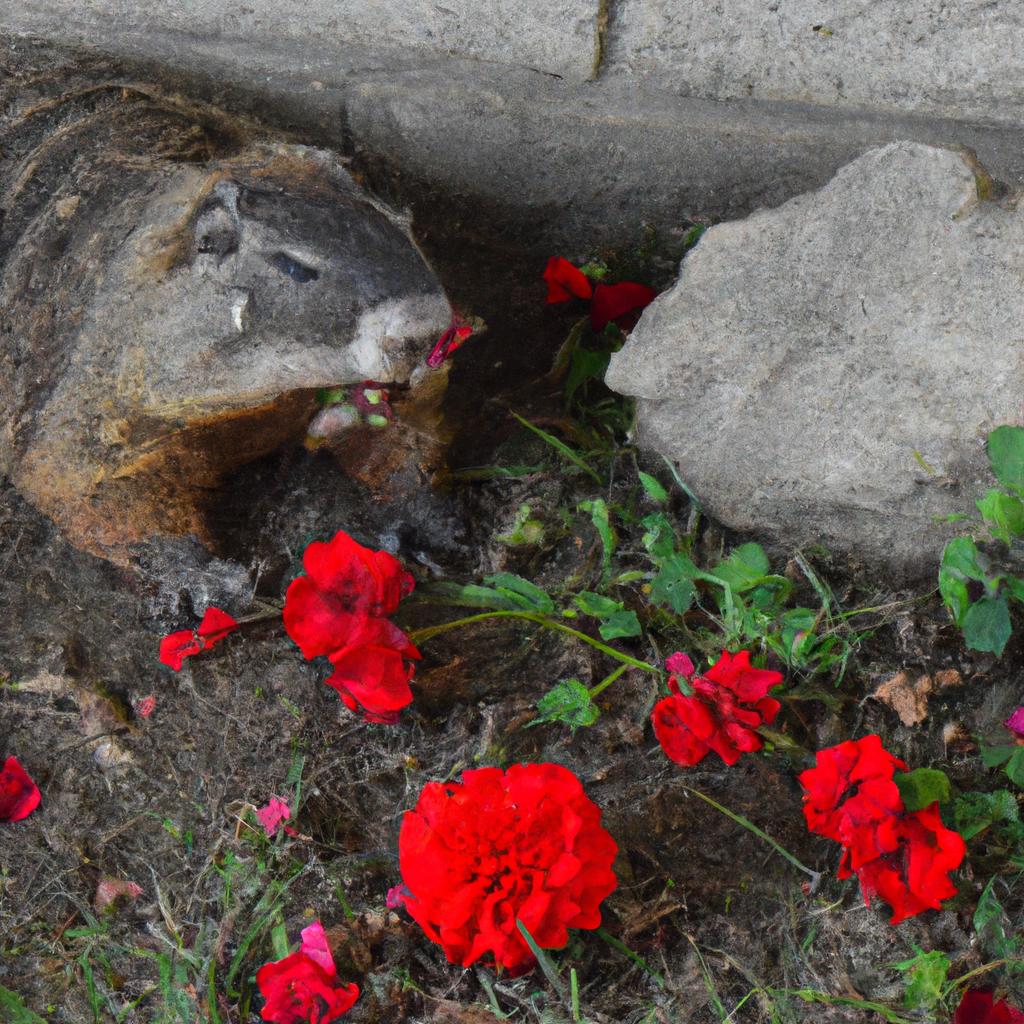As a backyard owner, I’ve always been interested in learning more about the wildlife that visits my garden.
One animal that has caught my attention recently is the groundhog.
These cute, furry creatures may look harmless, but they can cause significant damage to plants and crops.
One question that has been on my mind lately is, do groundhogs eat roses?
In this blog post, I’ll be sharing my findings, based on extensive research and personal experience, about groundhogs and their relationship with roses.
To answer the question right away, yes, groundhogs do eat roses.
However, the relationship between groundhogs and roses is not as simple as it may seem.

In this blog post, I will delve into the details of when, how, how often, and why groundhogs munch on these beautiful flowers.
I’ll also discuss the implications this has for backyard owners like myself, and mention other animals that might also be attracted to roses.
Contents
Groundhogs: A Brief Overview
Groundhogs, also known as woodchucks, are large rodents typically found in North America. They are primarily herbivores and feed on a variety of plants, including grass, weeds, and crops.
Groundhogs are notorious for being a nuisance to gardeners and farmers, as they can cause significant damage to plants by digging burrows and feeding on foliage.
When Do Groundhogs Eat Roses?
Groundhogs are most active during the daytime, particularly in the early morning and late afternoon. This is when they come out of their burrows to forage for food.
If you have roses in your garden, you may notice signs of groundhog activity during these times, such as chewed leaves and stems.
How Do Groundhogs Eat Roses?
Groundhogs have strong, sharp teeth that enable them to easily chew through plant material. When they encounter a rose bush, they will typically bite off the leaves and stems, sometimes even eating the flowers themselves.

This can result in significant damage to the plant, especially if the groundhog is a regular visitor to your garden.
How Often Do Groundhogs Eat Roses?
The frequency with which groundhogs eat roses depends on several factors, such as the availability of other food sources and the size of the groundhog population in the area.
In general, groundhogs will eat roses as part of their regular diet, but they may prioritize other plants if they are more readily available.
Why Do Groundhogs Eat Roses?
Groundhogs eat roses for the same reason they eat any other plant: to obtain the nutrients they need to survive. Roses, like other plants, contain various nutrients that are essential for the groundhog’s health and well-being.
Additionally, roses may be an attractive food source for groundhogs because they are often grown in gardens, which offer relatively easy access to food compared to more wild environments.
Implications for Backyard Owners
As a backyard owner, it’s essential to be aware of the potential damage that groundhogs can cause to your roses and other plants.
While it may be disheartening to see your beautiful rose bushes damaged by these critters, it’s important to remember that groundhogs are simply trying to survive and are not intentionally causing harm to your garden.
By understanding the behavior and feeding habits of groundhogs, you can take steps to protect your roses and minimize their impact on your garden.
Other Animals That Eat Roses
While groundhogs are certainly a concern for backyard owners growing roses, they are not the only animals that may be attracted to these beautiful flowers. Other animals that may pose a threat to your roses include:
- Deer: Deer are notorious for eating roses, particularly the tender new growth and flower buds.
- Rabbits: Rabbits may also munch on rose leaves, stems, and flowers, causing damage to the plant.
- Japanese beetles: These pests are known to feast on rose petals, leaving behind a skeletonized appearance.
- Aphids: Aphids are small insects that can cause damage to roses by sucking the sap from the plant.
How To Keep Groundhogs Out Of Your Yard!
There are several things that can be done to prevent groundhogs from digging and eating stuff in your backyard. I will list some of the strategies below.
Also, see my recent post if you want a full list of my favorite methods to keep groundhogs and gophers away!
1. Using ultrasonic sound
Groundhogs, like other bigger mammals that may invade your garden, tend to have very good hearing. This means that loud or consistent noises will scare them away or at least shorten their visits.
Check out my full buying guide for these ingenious ultrasonic repeller devices here!
One of my favorite technologies to keep pests away from my backyard is these cool solar-powered ultrasonic sound emitters that you can buy right from Amazon! In my experience, they really work, and the solar panels on top save you the time and money of changing batteries all the time.
They will also work against other rodents like gophers, mice, and rats!
2. Sprinkling natural repellents
Groundhogs may be scared off by using natural scents such as coyote urine or predator scents.
They may also cause them to leave if there is a combination of sounds being played from a radio. The sounds include the sound of barking dogs and coyotes.
You can sprinkle dog hair, cayenne pepper or strong enteric oils and other natural repellents around the garden to keep the groundhogs away.
See my complete list of humane ways to keep groundhogs away from your yard for more tips and tricks!
3. Fencing around the garden
You can also fence around your garden to keep groundhogs from entering the garden. It should be at least 3 feet deep and have a double row of fencing.
Groundhogs are good diggers so it has to go underground or they may find a way into the garden even with the fences in place!
4. Using live traps
You can use a live trap to capture groundhogs and move them to another area. Live trapping is currently the most humane way of groundhog control. Once you have removed all groundhogs from an area, it is important to ensure that they do not come back by using fencing or other barriers to block access.
You can also just buy a live trap, as the sturdy metal ones shown here:
To lure the groundhogs in, you can use one of the numerous favorite foods of groundhogs or an optimized extra attractive formula like this one to make the catch even quicker!
5. Using natural pesticides
There are pesticides or rodent toxins that can be used to kill groundhogs on your property. These may also affect other animals in the area so it is important to ensure that they are only sprayed on the targeted plants.
I do not recommend these, as I prefer more humane ways as described here. Also, anything that kills an animal will also harm humans to some degree, so go for a repellant rather than a toxin if you go the chemical route!
6. Using Scarecrows
You can use a scarecrow in your garden to keep groundhogs away. Groundhogs are afraid of novelty so time-sensitive or motion-activated scarecrows may also be effective in keeping them out of the garden.
7. Using Lights
Groundhogs are not strictly nocturnal animals but they are most active at low light so they do avoid areas with bright lights.
Motion-activated lights, sounds, and sprinklers may help prevent groundhogs from entering your yard.
Any blinking light will confuse and scare away groundhogs from your yard, especially if they are motion activated and sudden!
8. Motion-activated sprinklers
Like most animals, groundhogs hate surprises, and they will run away if suddenly sprayed with water. I like this solution because it is humane, simple, effective, and does not require much time to set up.
The Havahart 5277 is a motion-activated sprinkler that is activated by the movement of animals up to 25 feet away and sprays them with a harmless water jet, frightening them off and keeping them at bay.
The included metal stake makes it easy to install in your garden, and the sprinkler can be rotated 180 degrees for maximum coverage.
Conclusion
So, do groundhogs eat roses? Yes, they do, but it’s important to remember that they are just one of many animals that may be attracted to your garden.
As a backyard owner, being aware of the potential threats to your roses and other plants can help you take steps to protect your garden and keep it looking beautiful.















